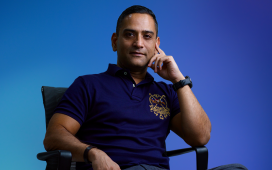We’re emerging into a new world.
Every day.
That’s the reality now for smart brands vying for the all-important space in the minds of their collective consumers.
In this fast-changing world, we’re seeing a backlash against globalisation. Brexit, Trump and an increasing desire for a sustainable planet are tangible examples of this change. Yet at the same time we’re all (including millennials) seeking more balance, alignment, expression and purpose, and have a deep desire for community.
We’re more connected than ever before and yet we can all see and feel that, culturally and emotionally, we are increasingly in search of a sense of connection and community.
Weird, right? So what�
To continue reading this article you need to be registered with Campaign. Registration is free and only takes a minute. Register Now or sign in below if you already have an account.









